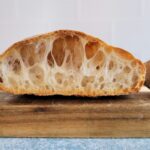No, a colonoscopy cannot detect fatty liver disease. In the realm of digestive health and liver diseases, it’s vital to understand that diagnostic tools have specific uses based on their design and the part of the body they examine. The colonoscopy, a procedure widely recognized for its role in detecting colorectal abnormalities, involves the examination of the inner lining of the colon and rectum using a colonoscope. Its primary purpose is to identify issues within the colon, such as polyps, colorectal cancer, and inflammation, making it an invaluable tool in gastrointestinal health management.
Fatty liver disease, on the other hand, involves the accumulation of excess fat in liver cells, a condition not visible through colonoscopy. This disease is typically detected using imaging tests such as ultrasound, CT scans, or MRI, which can visualize the liver and assess fat content. Blood tests may also be used to check for elevated liver enzymes that indicate liver inflammation or damage. For a comprehensive evaluation, a liver biopsy might be performed, offering a detailed view of the liver’s condition by examining a tissue sample under a microscope.
Contents
Understanding Fatty Liver Disease
Fatty liver disease, known medically as hepatic steatosis, occurs when excess fat accumulates in the liver. This condition is categorized into two main types: non-alcoholic fatty liver disease (NAFLD) and alcoholic liver disease (ALD). NAFLD is the most common form of liver disease in Western countries, affecting about 25% of the global population.
Table 1: Types of Fatty Liver Disease
| Type | Description |
|---|---|
| Non-Alcoholic Fatty Liver Disease (NAFLD) | Occurs in people who drink little to no alcohol, linked to obesity, type 2 diabetes, and metabolic syndrome. |
| Alcoholic Liver Disease (ALD) | Result of heavy alcohol consumption over many years. |
Diagnostic Approaches for Fatty Liver Disease
To diagnose fatty liver disease, healthcare providers rely on a combination of patient history, physical examination, blood tests, and imaging studies. Here’s a brief overview of the diagnostic methods used:
- Blood Tests: Liver function tests can help detect inflammation and damage to liver cells by measuring levels of liver enzymes in the blood.
- Imaging Tests: Ultrasound is often the first imaging technique used to detect the presence of fat in the liver. Other imaging modalities like computed tomography (CT) scans, magnetic resonance imaging (MRI), and FibroScan (transient elastography) can also be employed to assess liver fat and fibrosis.
- Liver Biopsy: In some cases, a liver biopsy may be performed to confirm the diagnosis of fatty liver disease. This involves removing a small sample of liver tissue with a needle and examining it under a microscope.
Misconceptions and Clarifications
When it comes to diagnosing fatty liver disease, there are several misconceptions regarding the capabilities of diagnostic tools, particularly colonoscopies. Let’s address these misconceptions and provide clarifications to ensure a clear understanding of how fatty liver disease is detected.
Misconception: Colonoscopies Can Detect Liver Diseases
One common misconception is that since the liver and the colon are part of the digestive system, a colonoscopy can be used to assess liver health, including detecting fatty liver disease.
Clarification: A colonoscopy is specifically designed to inspect the inner lining of the colon and rectum. It does not provide visibility or diagnostic capabilities for liver conditions, including fatty liver disease. The liver is not within the visual field of the colonoscope, making it impossible for this procedure to detect fatty liver or any other liver disease directly.
Misconception: All Digestive System Diseases Can Be Diagnosed with a Single Test
Another misconception is the belief that a single diagnostic test, like a colonoscopy, can diagnose all diseases within the digestive system.
Clarification: The digestive system is complex and comprises various organs, each requiring specific diagnostic approaches. Diseases affecting the liver, for instance, necessitate liver-specific tests such as blood tests (liver function tests), imaging (ultrasound, MRI, CT scan), and sometimes a liver biopsy. Colonoscopies are specialized procedures aimed at detecting colon and rectal diseases and are not suitable for diagnosing conditions affecting other organs.
Misconception: Imaging Tests for the Colon Can Reveal Liver Health
Some might think that imaging tests conducted during or as part of a colonoscopy procedure can also provide insights into liver health.
Clarification: While some imaging tests like CT scans or MRIs can indeed assess multiple abdominal organs, their use during a colonoscopy is not aimed at evaluating the liver. Specific settings and protocols are required to accurately assess liver health, which are different from those used during colon examinations. Therefore, a targeted approach using liver-specific imaging techniques is essential for diagnosing fatty liver disease.
Alternative Methods for Detecting Fatty Liver
For diagnosing fatty liver disease, imaging tests like ultrasound are the first line of non-invasive assessment. Ultrasound is particularly effective in detecting moderate to severe fatty liver. However, it might not detect mild fatty liver disease. Advanced imaging techniques such as FibroScan (transient elastography) can also measure liver stiffness, indicating fibrosis, which is often associated with NAFLD and NASH (non-alcoholic steatohepatitis, a severe form of NAFLD).
Liver Function Tests (LFTs)
Liver function tests are crucial in assessing liver health. These blood tests measure levels of liver enzymes, proteins, and bilirubin. Elevated levels can indicate liver damage or disease, including fatty liver.
Prevention and Management of Fatty Liver Disease
Managing fatty liver disease involves lifestyle changes and, in some cases, medications. Key strategies include:
- Weight loss: Reducing body weight by 5% to 10% can significantly decrease liver fat.
- Dietary changes: A healthy diet, rich in fruits, vegetables, whole grains, and healthy fats, can improve liver health.
- Exercise: Regular physical activity helps reduce liver fat.
- Avoiding alcohol: Particularly important in ALD, but also beneficial in NAFLD management.
- Monitoring and managing cholesterol and glucose levels: Essential for overall health and preventing disease progression.
Conclusion
While a colonoscopy is an essential tool in colorectal cancer screening and detecting lower gastrointestinal issues, it cannot detect fatty liver disease. The diagnosis of fatty liver requires a combination of medical history, physical examination, blood tests, and specific imaging techniques. Understanding the limitations and appropriate applications of various diagnostic tools is crucial in effectively detecting and managing liver diseases.
References
- Younossi, Z.M., et al. (2016). “Global epidemiology of nonalcoholic fatty liver disease—Meta-analytic assessment of prevalence, incidence, and outcomes.” Hepatology, 64(1), 73-84.
Further Reading
- “The Liver Disorders and Hepatitis Sourcebook” (Howard J. Worman, M.D.) – Provides comprehensive information on various liver conditions, including fatty liver disease, and discusses diagnosis and treatment options.
- “Fatty Liver: You Can Reverse It” (Dr. Sandra Cabot) – Offers insights into the causes of fatty liver and practical advice on how to reverse the condition through diet and lifestyle changes.
Understanding the intricacies of liver health and the tools available for its assessment is vital. While a colonoscopy plays a significant role in colorectal health, it does not extend to diagnosing fatty liver disease, underscoring the importance of targeted diagnostic methods and comprehensive liver care.


